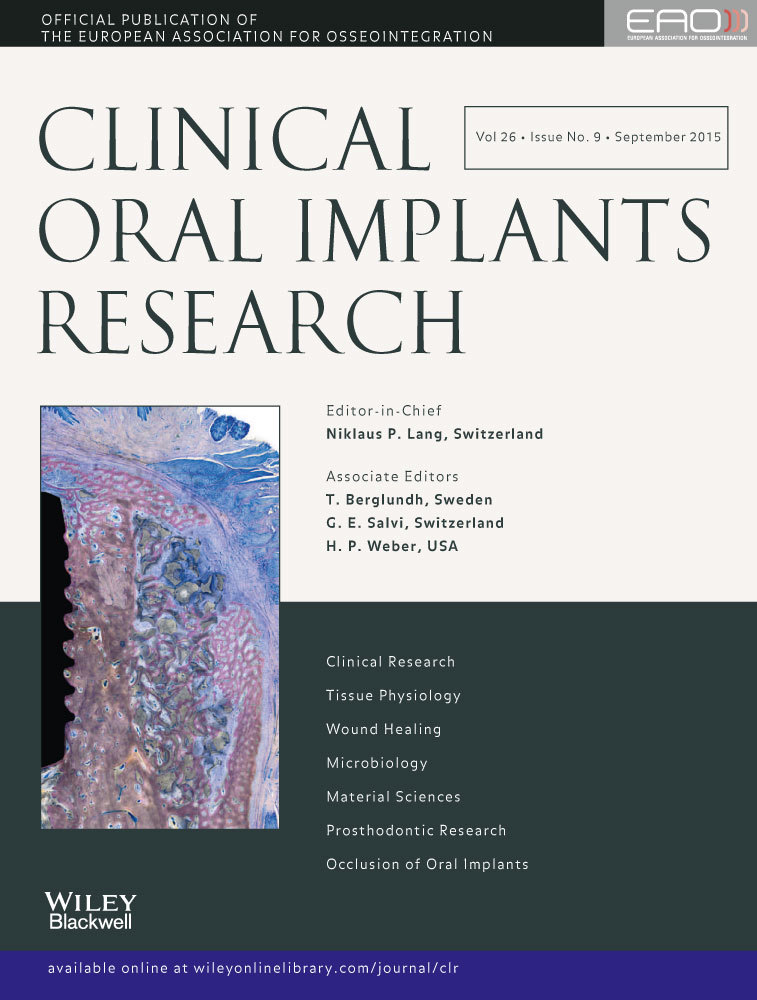Bone morphology changes around two types of bone-level implants installed in fresh extraction sockets – a histomorphometric study in Beagle dogs
Abstract
Background
Minimizing crestal bone loss following immediate implant placement is considered the most challenging aspect in implant therapy. Implant surface topography and chemical modifications have been shown to influence the success of Osseointegration. The Straumann® Bone Level implant, featuring SLActive surface, has been introduced with the aim of enhancing bone apposition. Similarly, the OsseoSpeed™ implants from Astra Tech claim to have an enhanced osseointegration. Because of the specific features in the implant design, both companies claim that crestal resorption is minimal with these implants.
Objective
To evaluate the osseointegration and crestal bone level following immediate placement of Straumann® Bone Level implant and OsseoSpeed™ implants in fresh extraction sockets in Beagle dogs.
Method
The distal roots of the second, third and fourth premolars were extracted in both sides of the mandible. The distal roots were removed using a dental elevator. A total of 60 fixtures were installed in 10 Beagle dogs. Two types of implants were used: Straumann® Bone-Level implants, which were 8 × 3.3 mm in size, and Astra Tech OsseoSpeed™ 3.5 S MicroThread™ implants, which were 8 × 3.5 mm in size. The histomorphometrical evaluation was performed at the end of 4- and 12-week healing. The implant–bone contact and bone volume percentage were assessed.
Results
The bone-to-implant contact (BIC) and the bone volume did not show any significant changes for both types of implants. The OsseoSpeed™ implants showed 67.4% and 65.3% BIC, respectively, at 4 and 12 weeks compared with 71.7 and 73.1 for the Straumann® Bone-Level implants. The bone volume around both types of implants did not differ significantly at both time periods. The crestal bone resorption was observed for both types of implants. The first BIC at buccal side and lingual side of the implants also did not differ significantly for both implant systems.
Conclusions
This study showed that Straumann® Bone Level and OsseoSpeed™ implants induced similar bone response after immediate implantation at 4 and 12 weeks. The immediate implant placement resulted in peri-implant crestal bone-level changes for both types of implants.




